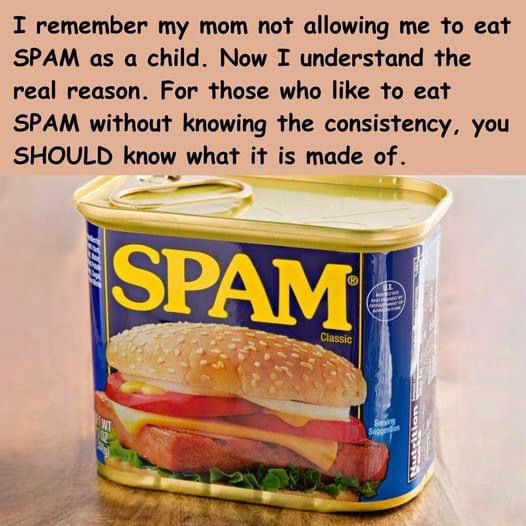Ever looked at a can of SPAM and wondered what’s really in it? You’re not alone. This famous canned meat has been a kitchen staple since 1937. While some people love its distinct flavor, others are more curious about its name and what it’s actually made of.
SPAM was introduced by Hormel Foods in Austin, Minnesota, as a budget-friendly and shelf-stable protein during tough times. What began as a practical solution quickly became a global food icon. But what does “SPAM” actually stand for? That part’s still up for debate. Some think it means “Shoulder of Pork and Ham,” while others say it’s “Specially Processed American Meat.” Hormel has never confirmed the meaning, which only adds to its mystique.
What we do know for sure is what goes into it: just six ingredients — pork with ham, salt, water, potato starch, sugar, and sodium nitrite. That last one is a preservative that helps the meat stay fresh and flavorful over time, which is why SPAM can sit in your pantry for months (or years) without going bad.
The name “SPAM” was actually chosen through a contest held by Hormel. The winning idea came from actor Ken Daigneau, whose brother worked for the company. His prize? A $100 check — a pretty big deal back in the ’30s. He likely had no idea his suggestion would turn into a cultural icon, referenced in comedy sketches like Monty Python and featured at food festivals around the world.
Today, SPAM comes in a variety of flavors like Jalapeño, Hickory Smoke, Teriyaki, Hot & Spicy, and even Cheese. It’s used in dishes all over the world — from Hawaiian SPAM musubi and Filipino silog breakfasts to Korean budae jjigae (army stew) and even creative recipes by professional chefs. Whether it’s fried, grilled, baked, or eaten right out of the can, SPAM continues to find its way onto plates everywhere.
SPAM’s lasting appeal lies in its simplicity, versatility, and nostalgia. For many, it’s a taste of home. For others, it’s an ingredient with endless possibilities. But it’s more than just meat in a can — it’s a little piece of food history.
So the next time you see that iconic blue-and-yellow can, remember: SPAM isn’t just mystery meat. It’s a time-tested recipe with a curious name, a colorful legacy, and a global fan base. Whether you’re trying it for the first time or revisiting a childhood favorite, one thing’s clear — SPAM isn’t going anywhere.
